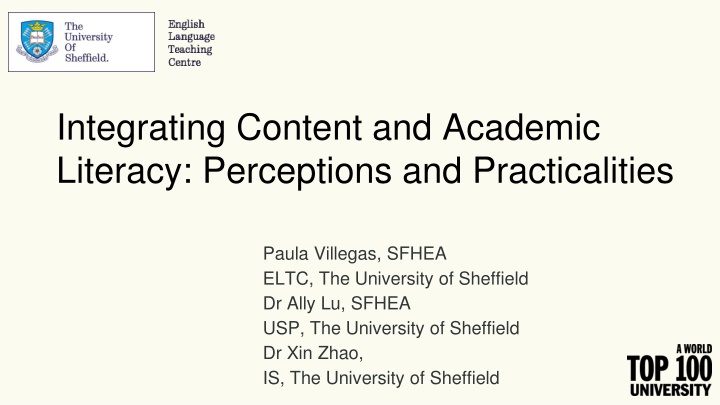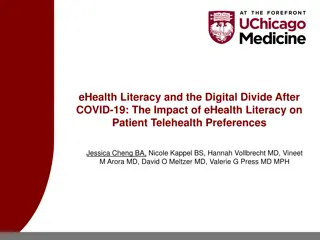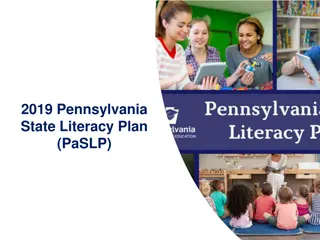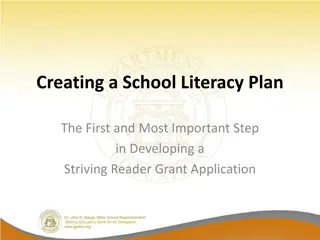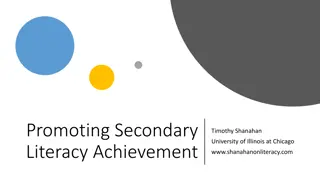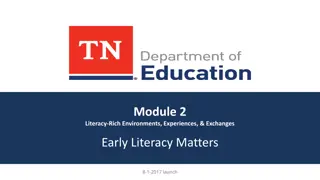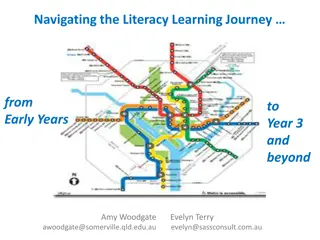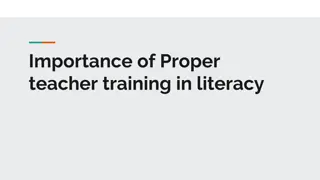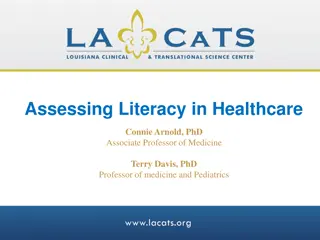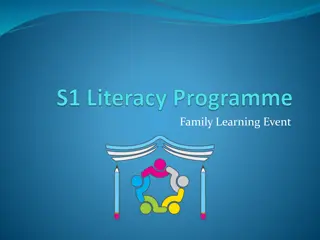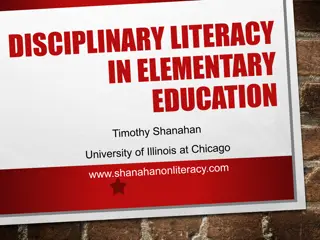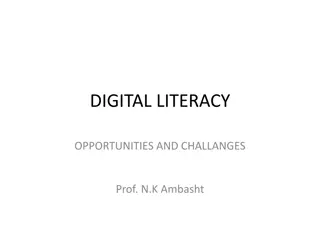Integrating Content and Academic Literacy: Perceptions and Practicalities in Education
Exploring the challenge of integrating content and academic literacy in education, this study delves into practical strategies and student perceptions. The research showcases the importance of bridging the gap between language support and subject content to enhance student learning outcomes.
Download Presentation

Please find below an Image/Link to download the presentation.
The content on the website is provided AS IS for your information and personal use only. It may not be sold, licensed, or shared on other websites without obtaining consent from the author.If you encounter any issues during the download, it is possible that the publisher has removed the file from their server.
You are allowed to download the files provided on this website for personal or commercial use, subject to the condition that they are used lawfully. All files are the property of their respective owners.
The content on the website is provided AS IS for your information and personal use only. It may not be sold, licensed, or shared on other websites without obtaining consent from the author.
E N D
Presentation Transcript
Integrating Content and Academic Literacy: Perceptions and Practicalities Paula Villegas, SFHEA ELTC, The University of Sheffield Dr Ally Lu, SFHEA USP, The University of Sheffield Dr Xin Zhao, IS, The University of Sheffield
Outline The challenge Our approach What did the student say? What did we say? What did we all learn?
The Challenge 10 ESAP sessions in semester 1 for international students only Attendance drops off How is this helping me in my studies? How can we reach all students that could benefit from our support?
The Challenge what does the literature say? EAP courses tend to be independent of academic departments, usually falling within the realm of students services -> marginalisation of EAP (Hyatt, 2015) The split between EAP and content actively contributes to the trivialisation of EAP (Wingate, 2015) Instrumentalization of EAP (Hyatt, 2015). A specialist in both language and subject content subject is quite rare (Smith, 2015)
The Challenge what does the literature say? Reconceptualization of EAP as academic repertoire (Hyatt, 2015). Positive impact of embedding support (McWilliams & Allan, 2014). Enhancing motivation through authentic materials (D rnyei, Z., & Ott ., I. (1998). The ESAP lessons in line with principle of authenticity (Flower & Peacock, 2001, p. 183). Two specialists working together.
Our approach In 2019/2020 - ELTC & USP identified a suitable module TRP 108 Information & Communication Skills (Semester 1) 4x2 hours Team Taught sessions (Home & International students) 10 hours ESAP sessions (International students) Language feedback provided at the formative stage of final essay together with content feedback
Applying McWilliams and Allans Model (2014) (1) Students Feedback Student Centre Focus (1) Institutional Support (2) Cooperation & Collaboration (3) Guidance Approach (4) Not one size fits all (5) (4) Variety of support (2) Institutional Response (3) Subject Lecturer & EAP tutor close collaboration
Our approach - Practicalities Session 1 brief intro Session 2 Language for presentations Session 3 Language for compare & contrast (assessed essay) Session 4 (x2) workshop general language feedback & Q&A Session 5 (x1) Exam prep. Unpacking exam questions.
Our approach - Practicalities Session 0 brief intro Session 1 Language for presentations Session 2 Language for compare & contrast (assessed essay) Session 3 (x2) workshop general language feedback & Q&A Session 4 (x1) Exam prep. Unpacking exam questions.
Our approach - Practicalities Discussion of materials for upcoming session (a week in advance) Quick-follow up chat What worked?/ what didn t? What needs covering in the ESAP session?
What did the students say? - Perceptions Overall Positive Perceptions They always willing to help students and the module is also suitable for some students with lower foundation. The module is very helpful in terms of improving our essays (Using the correct structures, word choices, citing etc) this teaching team has helped my learning Both of them can explain content well and provide fitting comments Help me to do my assessment a lot Both were useful
What did the students say?- Perceptions Issues highlighted The ideas in class are clear, but for things like referencing, I need to take some practice to fully be able to grasp it. Hope more individual tutorials could be provided. I enjoy the 108 lessons, but not the English Language support as I do not find it very useful for my studies - (one student) Not super exciting but that is the nature of the module and will be very helpful for future university modules.
What did we say? - Perceptions Big thumbs up! Quality of writing was perceived to have improved in relation to previous years Attendance to ESAP sessions was consistent Attendance this year in UG2 is better than it has been before
What did we all learn? Continue to implement it online in 2020/2021 Strengthen collaboration between EAP practitioner and module lead for all support in USP Other departments have followed suit and implemented team-teaching and/ or added language specific feedback at the formative stage of assessments.
Reference List D rnyei, Z., & Ott ., I. (1998). Motivation in action: A process model of L2 motivation. Working papers in Applied Linguistics, 4, pp. 43-69 Flowerdew, J., & Peacock, M. (Eds.) (2001). Research Perspectives on English for Academic Purposes. Cambridge: Cambridge University Press. http://dx.doi.org/10.1017/CBO9781139524766 Hyatt, D. (2015) BALEAP PIM Plenary: David Hyatt - Reconceptualising EAP as Academic Repertoire. YouTube. Available at: https://www.youtube.com/watch?v=HZLfgu9ySzg&t=828s [Accessed 28 Mar. 2020]. McWilliams, R., & Allan, Q. (2014). Embedding Academic Literacy Skills: Towards a Best Practice Model, Journal of University Teaching & Learning Practice, 11(3). http://ro.uow.edu.au/jutlp/vol11/iss3/8 Smith (2015) Methodology in English for Specific Academic Purposes. uni- sheffield.adobeconnect.com. EAP Conference Chris Smith_0. [online] Available at: https://uni- sheffield.adobeconnect.com/p484ndpkawy/?proto=true [Accessed 28 Mar. 2020]. Wingate U. (2015) Academic Literacy and Student Diversity. The Case for Inclusive Practice, Multilingual Matters, Bristol.
